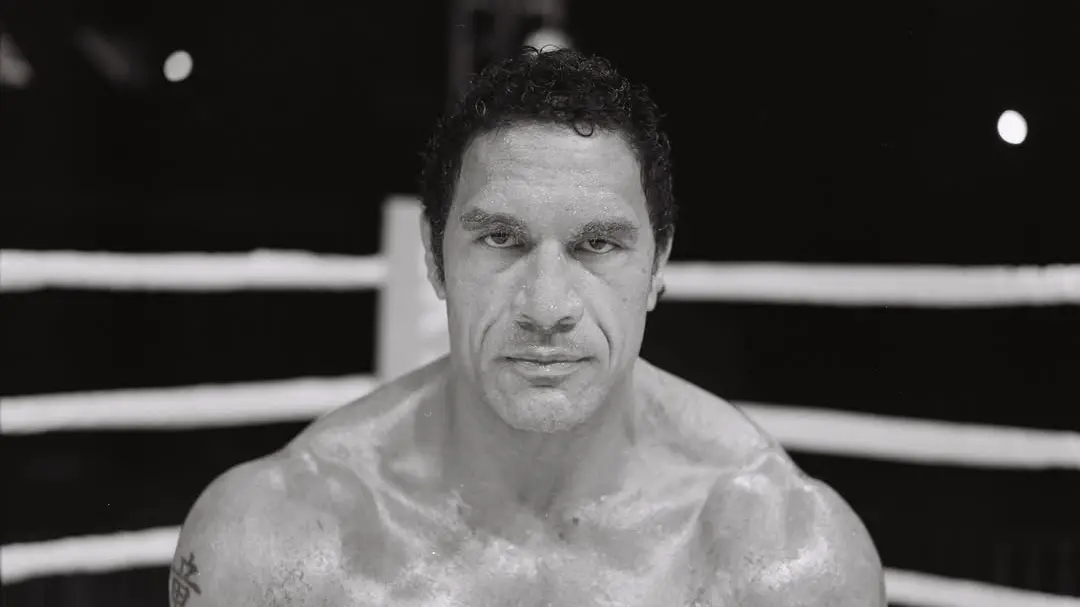The Smashing Machine ending explained: Does Mark Kerr win his final fight in Japan?
-

Not many sports drama films capture the raw emotional intensity like Benny Safdie’s The Smashing Machine, which follows the true story of MMA legend Mark Kerr. Produced by A24 and starring Dwayne Johnson alongside Emily Blunt, the film is based on the 2002 documentary titled The Smashing Machine: The Life and Times of Extreme Fighter Mark Kerr.
Mark Kerr’s final fight and emotional reaction to The Smashing Machine
In the final scene of The Smashing Machine, Kerr is seen facing off against Kazuyuki Fujita at the PRIDE Fighting Championships in Japan. By the time this fight took place, Kerr had fought through his addiction and also reconciled with his girlfriend, Dawn, and was filled with newfound determination to reclaim his place in the ring. Yet despite his efforts, he loses the fight. However, the ending feels less like a defeat and more like a release from years of pressure.
In an interview with The Hollywood Reporter, Kerr explained how the moment felt like when watching it for the first time at the Venice Film Festival:
“The last scene was gut-wrenching, just the intensity of what was going on. DJ is sitting on my left and patting my leg. Benny’s on my right and patting my leg, and I ended up holding his hand for the last half-hour of the movie. I have so many emotions running through me, and the way that I’m releasing them is tapping my legs and my arm back and forth.”
Kerr also described how seeing Dwayne Johnson transformed into his younger self through prosthetics shocked him.
“Nobody told me. I had this idea that he’s just going to be DJ with a wig on. The first time I saw him at prosthetics, I cussed at him for a minute. I’m looking at him — he’s a doppelganger. He’s a mirror image of me,” he said.
Despite losing his final PRIDE match, Kerr continued to fight professionally until 2009, when he retired after five consecutive defeats. Today, his focus lies on recovery and self-growth. Reflecting on his journey, he shared:
“Where I am now, [with] my ability to connect with another human being and ask for that help — it’s not a weakness, it’s a strength.”
Kerr’s story shows that redemption doesn’t always come through victory. In The Smashing Machine, his defeat becomes symbolic of freedom — a turning point where he finally chooses peace over pressure.
Recap of The Smashing Machine
The film begins with Mark Kerr at the peak of his fighting career, celebrated as one of the most dominant athletes in MMA. However, behind all this, Kerr was addicted to painkillers, a big self-doubter, and also struggling to maintain his passionate relationship with Dawn Staples.
As the film progresses, Kerr’s personal struggles carry over to the ring as he starts losing fights. His addiction to opioids starts quietly, but soon becomes central to his downfall. An overdose incident forces him into rehab, straining his relationship with Dawn and pushing him to reassess his life. With the guidance of trainer Bas Rutten, Kerr regains focus and rediscovers his strength, only to slip back into old habits after reuniting with Dawn.
The final scene of the film takes place in Japan, where Kerr faces Fujita in the PRIDE finals. The match is brutal and filled with flashbacks to his past — his struggles, his relationships, and the ghosts of his choices. When he loses, it feels inevitable yet liberating. In the aftermath, Kerr sits quietly in the locker room, smiling through tears — a moment that captures the essence of his journey.
The epilogue reveals that Kerr and Dawn married shortly after his loss and that he officially retired in 2009. Though his name is less recognized today, Kerr remains one of the sport’s foundational figures — a fighter whose real battle was never just in the cage but within himself.
The Smashing Machine honors Kerr not as a fallen athlete, but as a man who fought the hardest battles where no referee could intervene — within his own mind and heart.
TOPICS: The Smashing Machine
- Complete cast breakdown of The Smashing Machine: Who plays whom & where you’ve seen them before
- Who is Mark Kerr in real life? Dwayne Johnson's character in The Smashing Machine, explained
- Why did The Smashing Machine fail at the box office? The Rock's new film's opening day collection, explained
- Dwayne Johnson’s The Smashing Machine starring him as Mark Kerr gets a 15-minute ovation at Venice